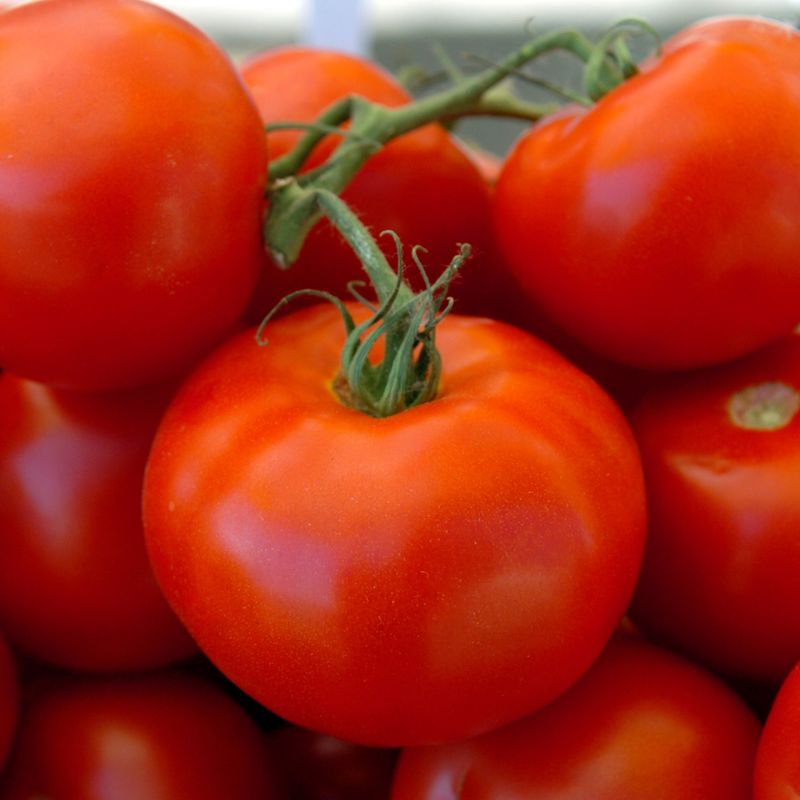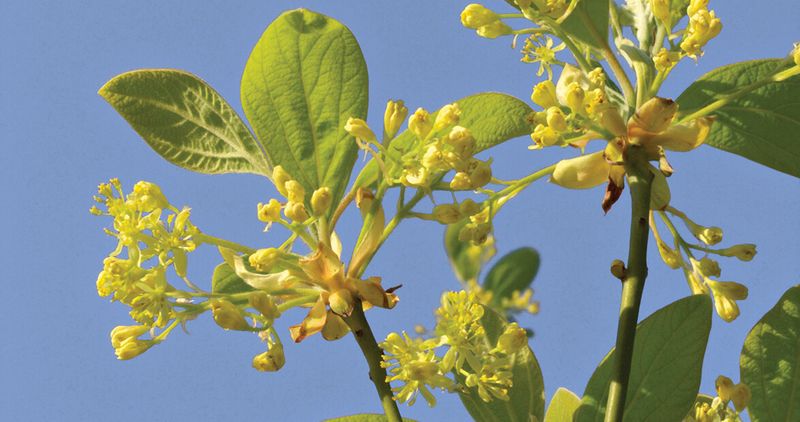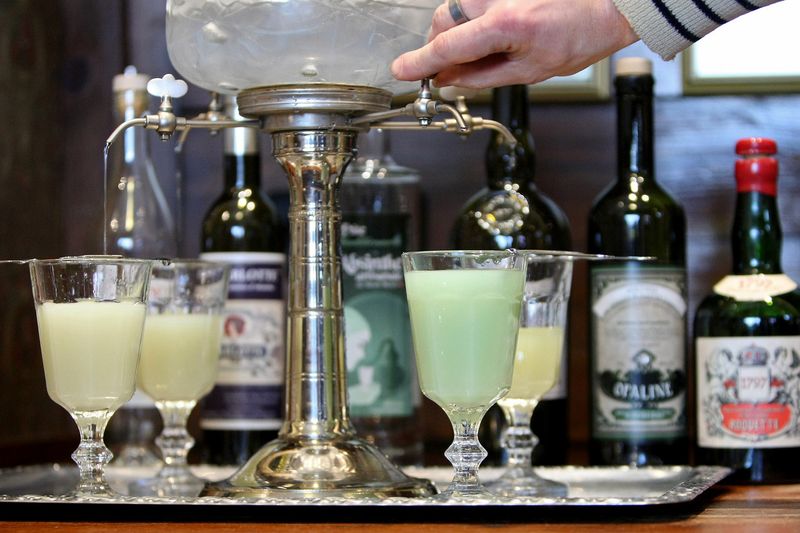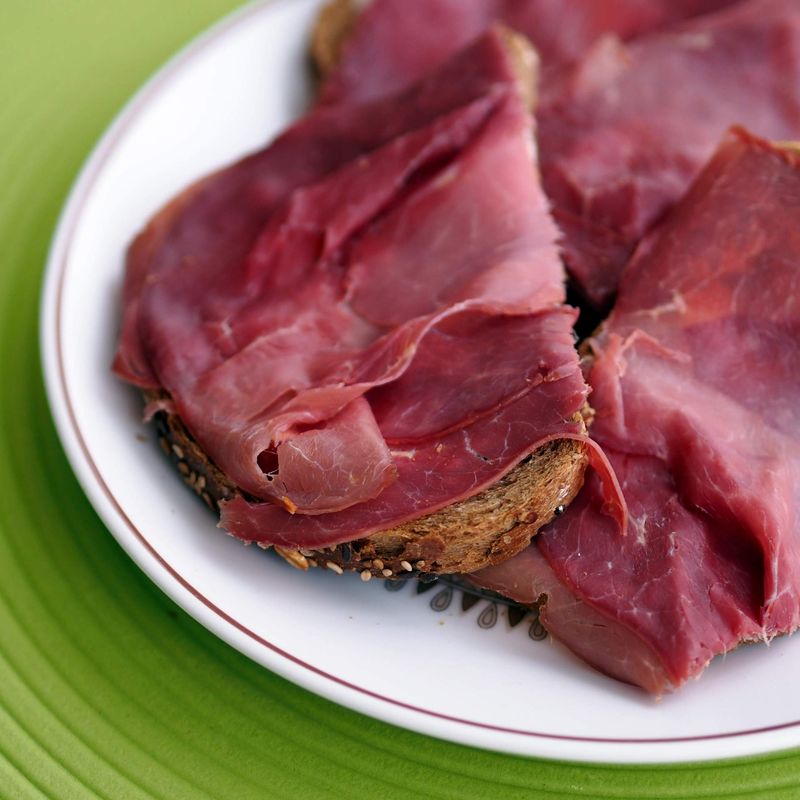The culinary history of the United States is as rich and varied as its cultural tapestry. Yet, surprisingly, some foods, now commonly found in American households, were once considered illegal.
From everyday snacks to gourmet delicacies, these foods have intriguing tales of prohibition.
Here, we explore ten such foods that were banned across different states and times. Their stories are as fascinating as the flavors they offer today.
1. Margarine

Once upon a time, margarine was a contentious subject in the U.S. During the late 19th century, margarine was seen as a threat to the dairy industry.
It was even dyed pink to discourage consumption! Some states required it to be sold with yellow dye packs so consumers could color it themselves. This was more than just a culinary choice; it was a legal battle between dairy farmers and margarine producers.
The controversy over margarine’s legality spanned decades. Only in 1950s did it become more widely accepted. Today, it’s hard to imagine margarine causing such uproar. The next time you spread that yellow goodness on toast, think about the years it spent in the legal limelight.
Its journey from being banned to beloved is a testament to changing tastes and industry influences.
2. Tomatoes

In the late 1800s, the humble tomato found itself at the center of a legal debate. At issue was whether it was a fruit or vegetable. This wasn’t just botanical banter; it impacted import tariffs. In 1893, the U.S. Supreme Court ruled tomatoes as vegetables for tariff purposes.
The case stemmed from regulations that taxed vegetables, not fruits. This quirky bit of legal drama highlights the tomato’s once-contentious status. Tomatoes, now a staple in American cuisine, were once caught in a whirlwind of legal definition.
Who knew a simple garden crop could stir such controversy? Next time you enjoy a fresh tomato, recall its days in court. The ruling has had lasting effects on tax law and culinary classification. It’s a delicious slice of history worth savoring.
3. Sassafras

Sassafras, a key ingredient in traditional root beer, has a colorful past. Once a popular flavoring, it was banned in the 1960s. The reason? Studies showed safrole, found in sassafras oil, could be carcinogenic. This led to a prohibition on its use in commercially produced foods and drinks.
The ban didn’t erase its historic appreciation. Instead, it paved the way for safrole-free alternatives. Root beer lovers might not realize that their fizz once featured this controversial ingredient. Today, sassafras is still used in some traditional dishes, but with caution.
Its ban reflects the evolving understanding of food safety and regulation. Despite its controversial past, sassafras remains a beloved part of culinary history. Its story is a reminder of how science influences what we eat.
4. Raw Milk

Raw milk has a rich, creamy allure but a tumultuous past. Concerns over bacterial contamination led to its ban in many states.
The 1920s saw a rise in pasteurization laws, aimed at making milk safer to drink. Despite its prohibition, raw milk has a devoted following. Proponents argue that pasteurization removes beneficial enzymes and flavors.
However, public health agencies warn against its risks. The debate over raw milk is as heated today as it was a century ago. It’s legal in some states under strict regulations, but others uphold bans. With its complex history, raw milk stirs discussions about health, safety, and personal choice.
It’s a testament to how food safety standards shape our diets. Whether you enjoy it or avoid it, raw milk’s story is a fascinating chapter in food history.
5. Absinthe

Absinthe, known for its vivid green color and mystique, was once illegal in the U.S. Associated with bohemian artists and writers, it was believed to induce hallucinations. This reputation, alongside anti-alcohol sentiment, led to its ban in 1912.
The “Green Fairy,” as it was nicknamed, became a symbol of decadence. It wasn’t until 2007 that absinthe legally returned to American shelves. Modern absinthe lacks thujone, the compound once thought to cause hallucinations.
Today, it enjoys a renaissance among cocktail enthusiasts. Its complex herbal flavor adds a unique twist to drinks. Absinthe’s journey from banned to beloved highlights changing attitudes towards alcohol. Its lore continues to captivate, blending history with hedonism.
The next time you sip this intriguing spirit, you’ll appreciate its eclectic past.
6. Foie Gras

Foie gras, a luxurious delicacy, has faced legal challenges in the U.S. Concerns about animal cruelty led to bans in places like California. Advocates argue that the force-feeding of ducks and geese is inhumane.
These bans reflect broader debates on ethical food consumption. However, foie gras remains a sought-after dish in fine dining. Legal battles haven’t diminished its culinary allure. Across the U.S., the legality of foie gras production and sale varies.
Its story is one of cultural clash and ethical scrutiny. Dining on foie gras today ties you to a complex narrative of tradition and modern ethics. Whether regarded as a treat or taboo, it sparks passionate discussion.
This delicacy’s journey in America is as rich as its taste, offering a deliciously divisive slice of foodie history.
7. Haggis

Haggis, Scotland’s national dish, encountered a ban in the U.S. due to one ingredient: sheep lungs. In 1971, the USDA prohibited their use in food products. This ban effectively barred authentic haggis from American tables.
Despite this, haggis enjoys a cult following. Scottish-Americans celebrate their heritage with modified versions. The ban highlights differences in food regulations between countries. While traditional haggis remains banned, creative cooks find ways around it.
This dish serves as a reminder of cultural identity and culinary innovation. Its story is one of adaptation, retaining its essence despite restrictions. Enjoying haggis today connects you with a rich tapestry of tradition and tenacity.
Whether authentic or adapted, haggis continues to intrigue food enthusiasts. Its legacy is a flavorful testament to cultural resilience.
8. Kinder Eggs

Kinder Eggs, with their playful surprises, were once banned in the U.S. The 1938 Food, Drug, and Cosmetic Act prohibited foods containing non-nutritive objects. This rule aimed to prevent choking hazards. Despite the ban, Kinder Eggs had a cult following.
Travelers smuggled them into the country, risking hefty fines. In 2013, a modified version, Kinder Joy, became available in the U.S. It separates the toy from the chocolate, complying with safety laws.
Kinder Eggs’ tale is one of ingenuity and adaptation. They remind us how safety standards shape consumer products.
Today, these treats delight children and adults alike. Their journey from banned to beloved highlights the balance between fun and safety. Next time you crack open a Kinder Joy, consider its storied path to American shelves.
9. Fugu

Fugu, the infamous Japanese pufferfish, is as deadly as it is delicious. The fish contains tetrodotoxin, a potent poison. Improper preparation can be fatal. Due to these risks, fugu was banned in the U.S. for years.
Specially licensed chefs must prepare it, ensuring safety. Today, it’s available in select American restaurants. Fugu’s allure lies in its danger and delicacy. Diners seek the thrill of eating something so potentially lethal. Its prohibition underscores the importance of food safety and expertise.
Enjoying fugu is both a culinary adventure and a testament to skilled craftsmanship. This fish’s journey from forbidden to fashionable reflects changing tastes and regulations. If you ever dare to try fugu, its story adds an extra layer of intrigue to your dining experience.
10. Horse Meat

Horse meat is a delicacy in many cultures, but controversial in the U.S. Cultural attitudes and legal obstacles have kept it largely off American plates. In 2007, Congress defunded inspections of horse slaughterhouses.
Without inspections, horse meat couldn’t be certified for sale. The ban reflects cultural preferences and concerns about animal welfare. In other parts of the world, horse meat is a common, even celebrated, ingredient. Its prohibition in the U.S. is a unique intersection of culture and policy.
The debate over horse meat is ongoing, with calls for legal changes. Whether viewed as a taboo or tasty, it provokes strong opinions. This meat’s contentious status is a window into how cultural values impact food choices. Its story is as complex and rich as the flavors it offers elsewhere.
Leave a comment